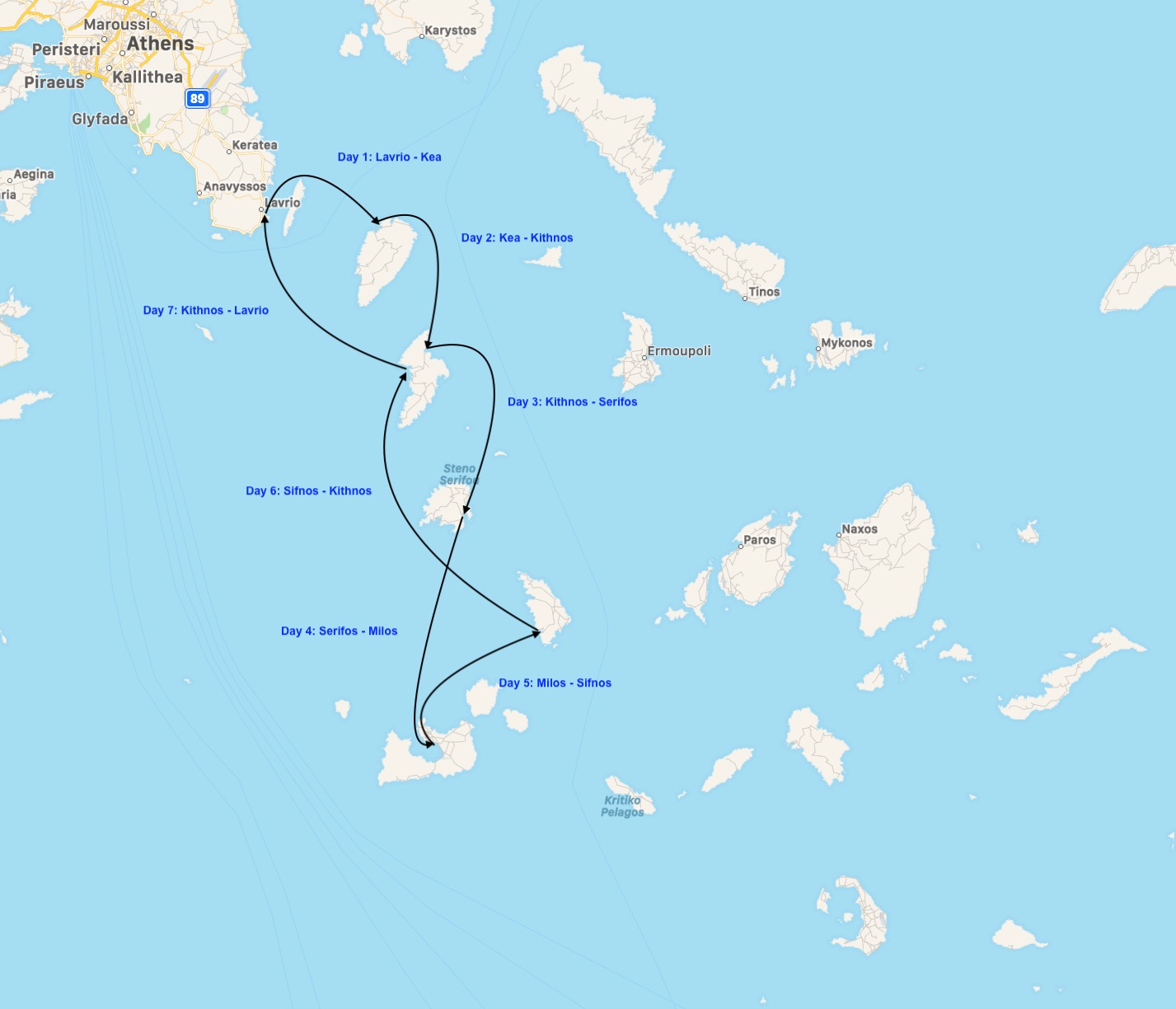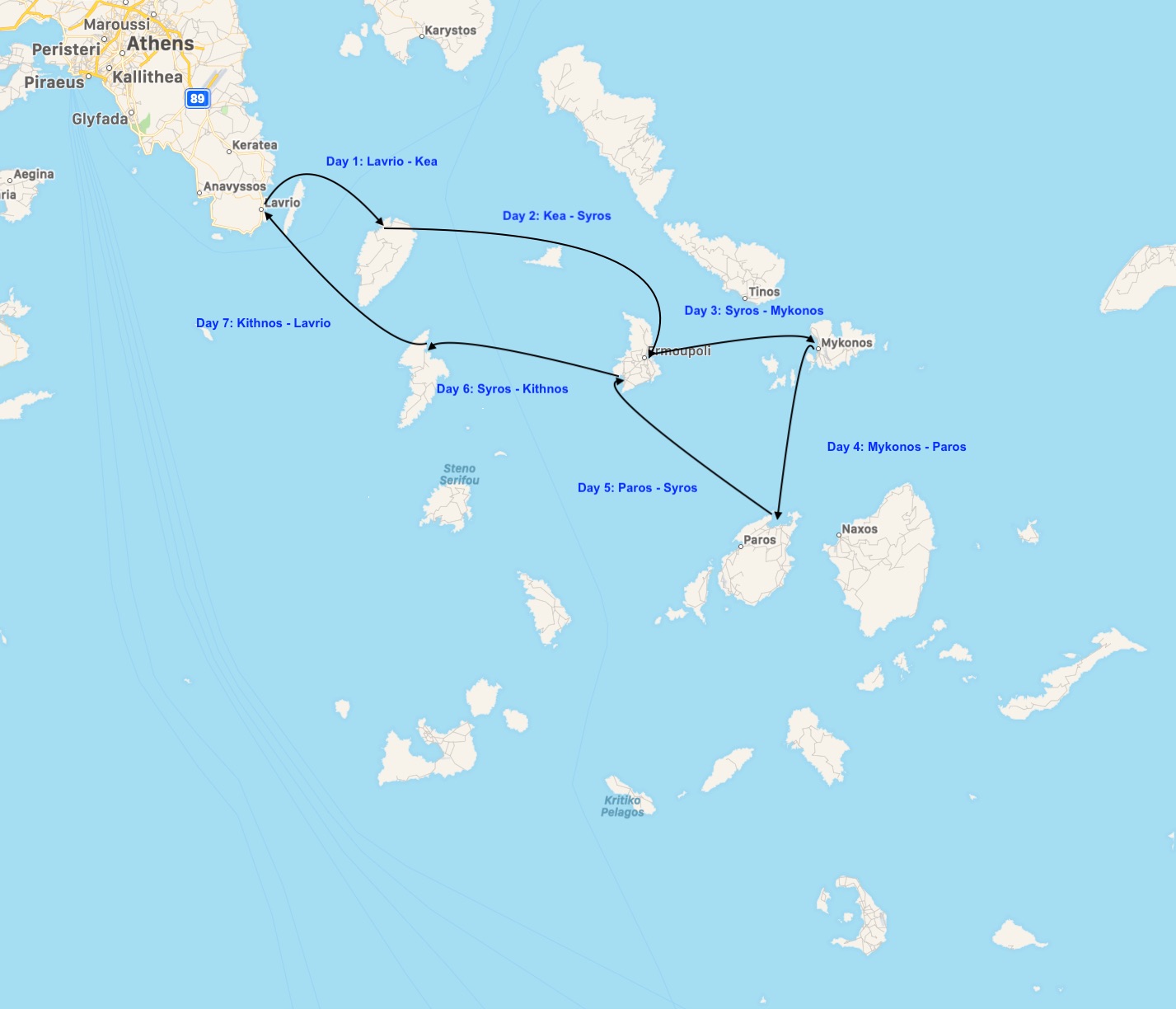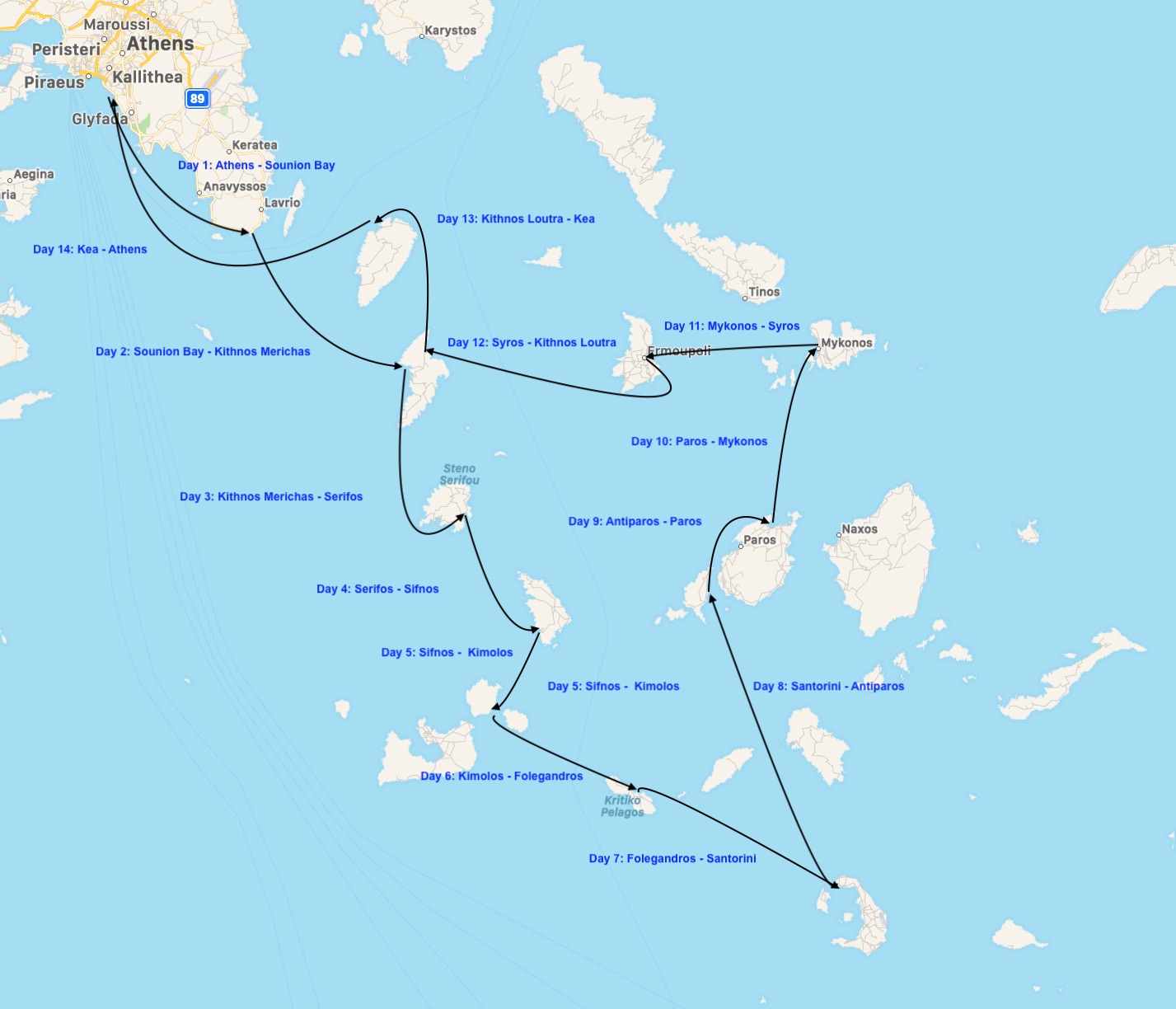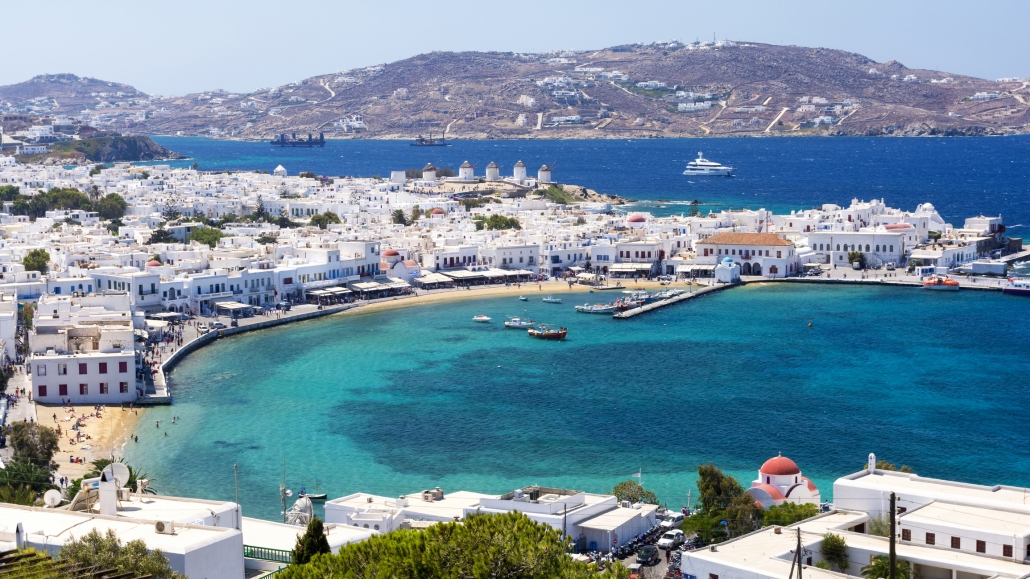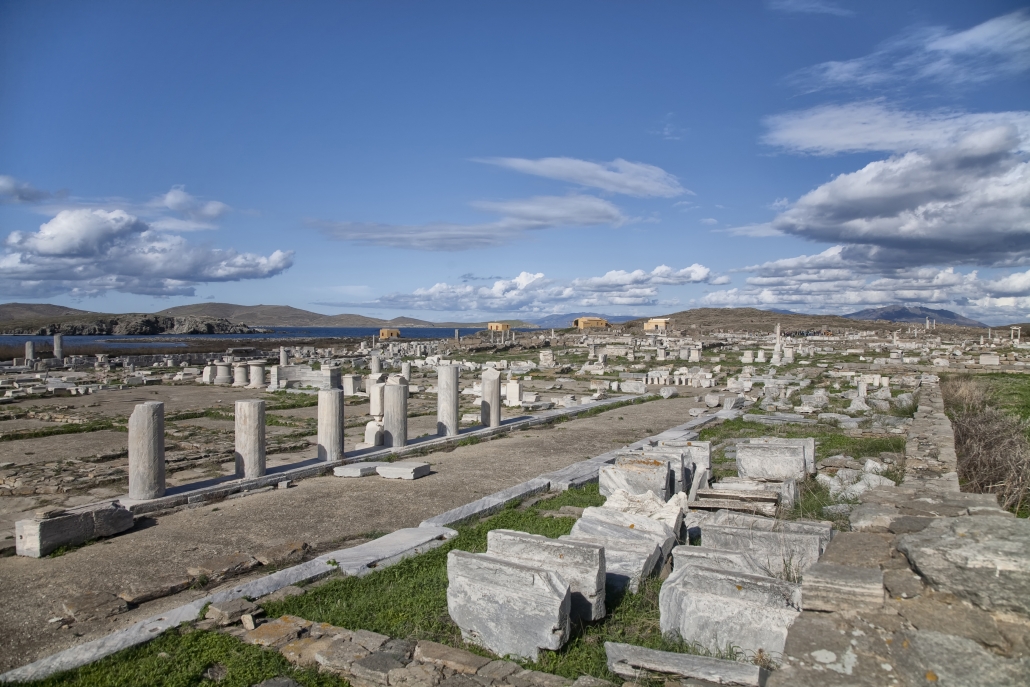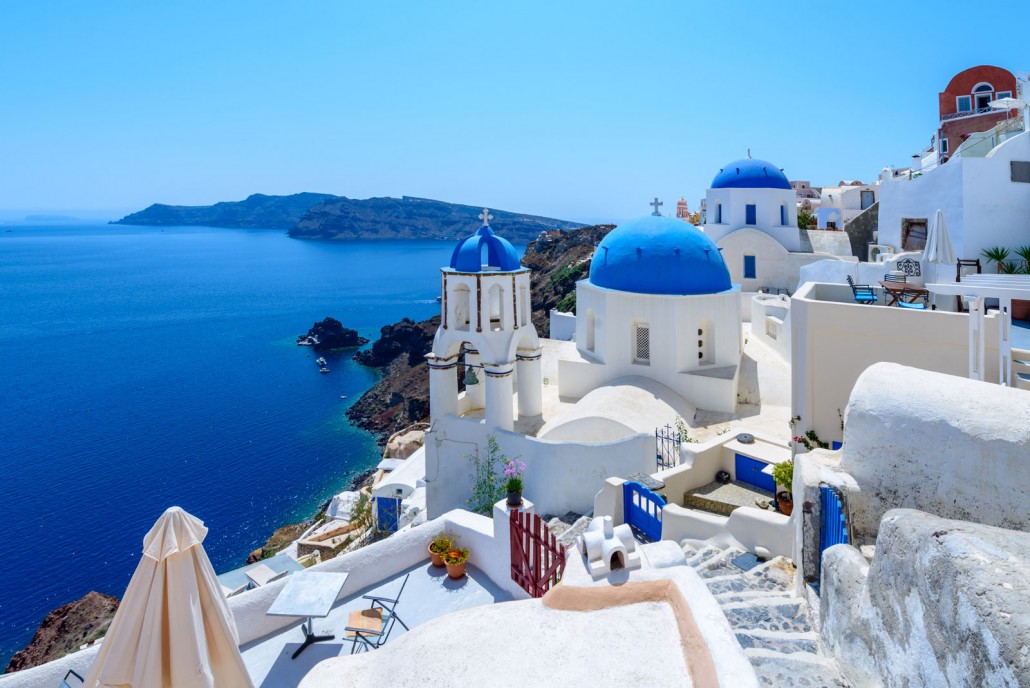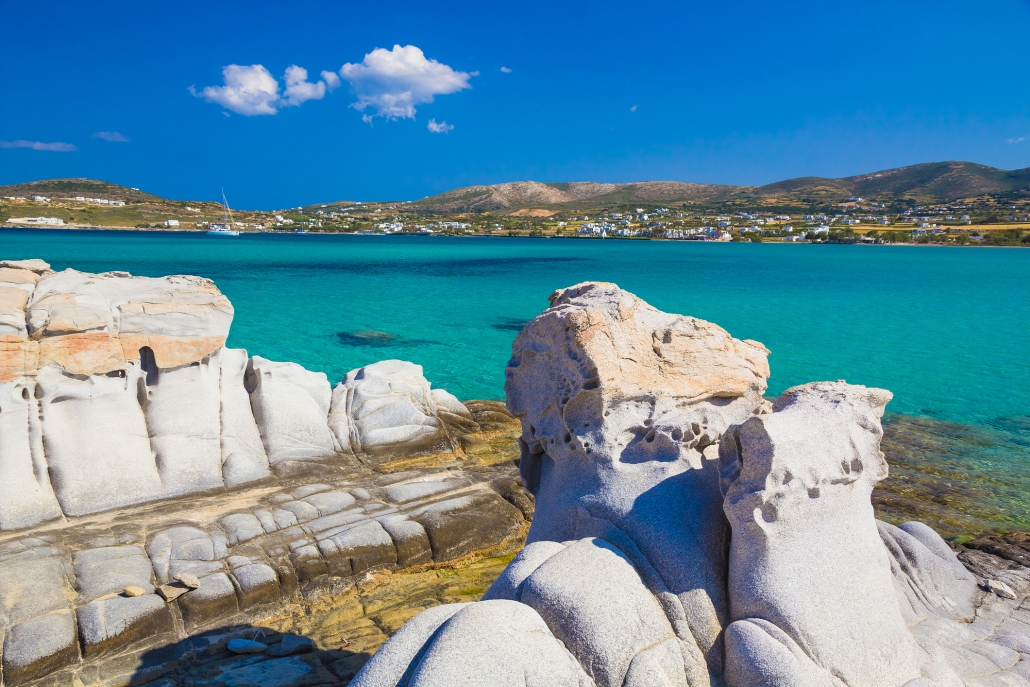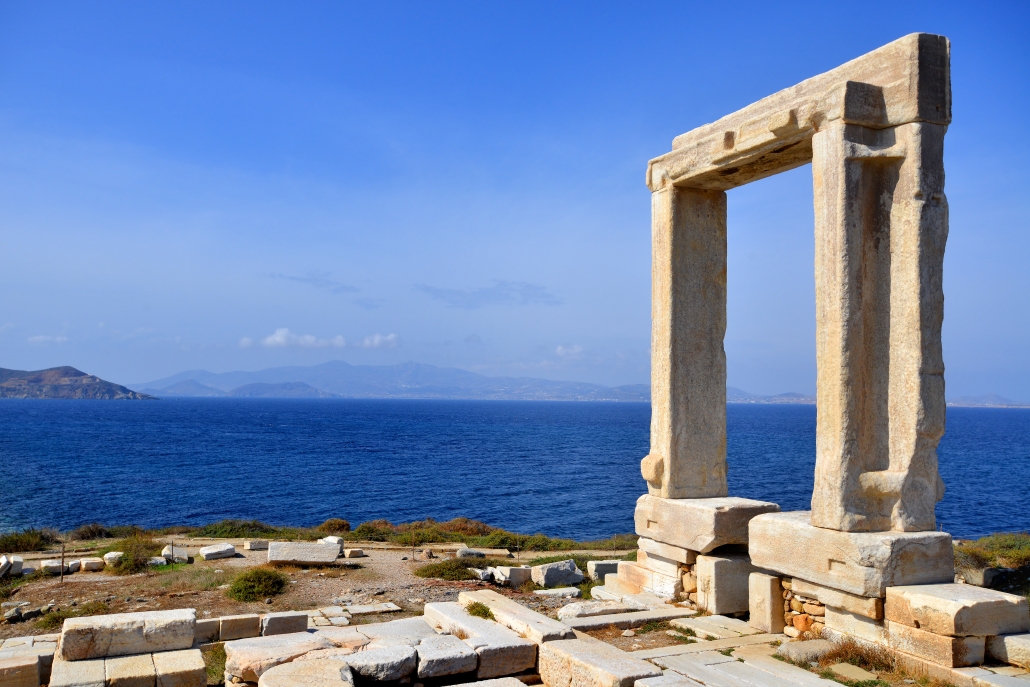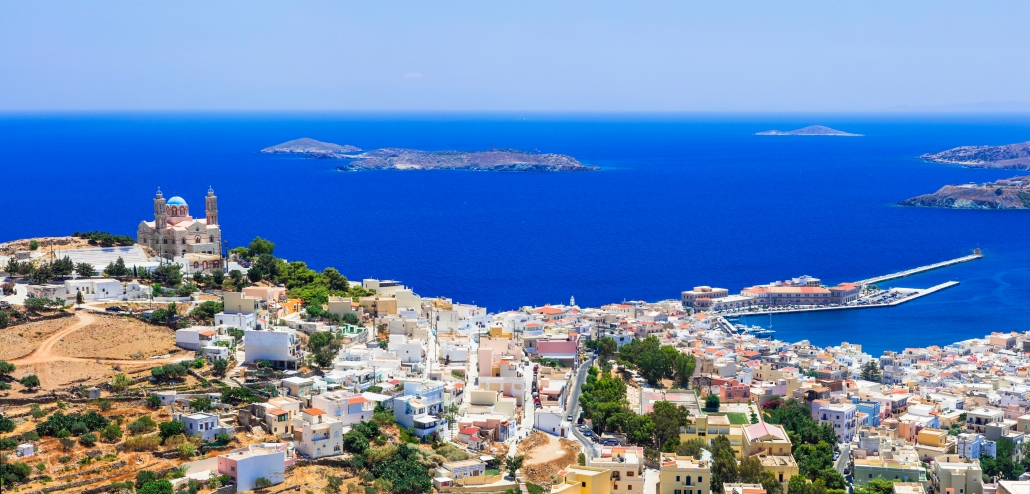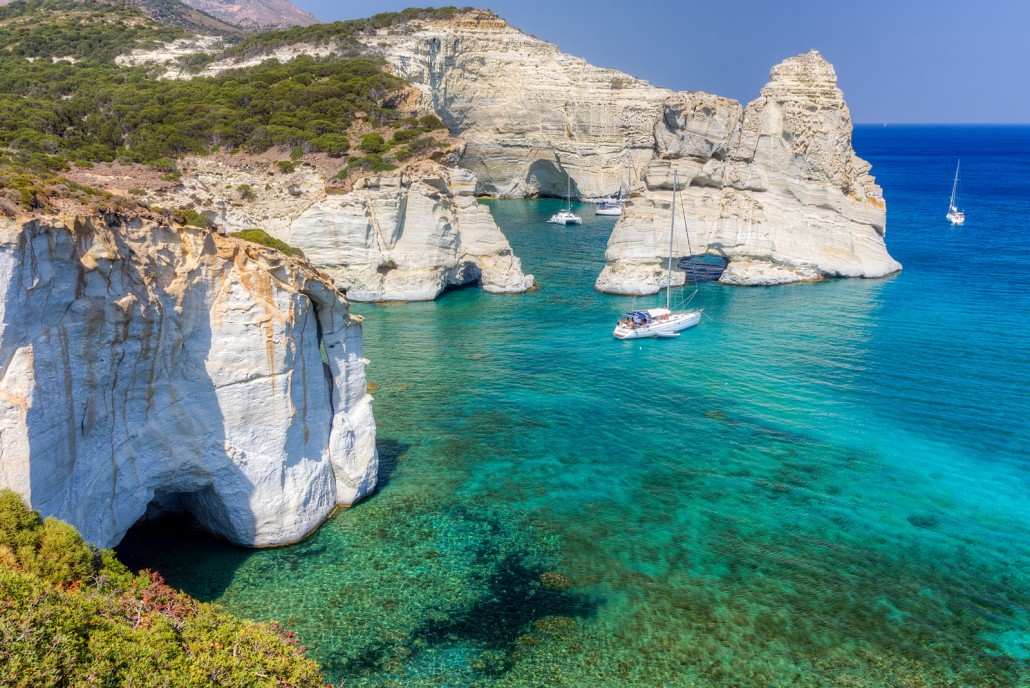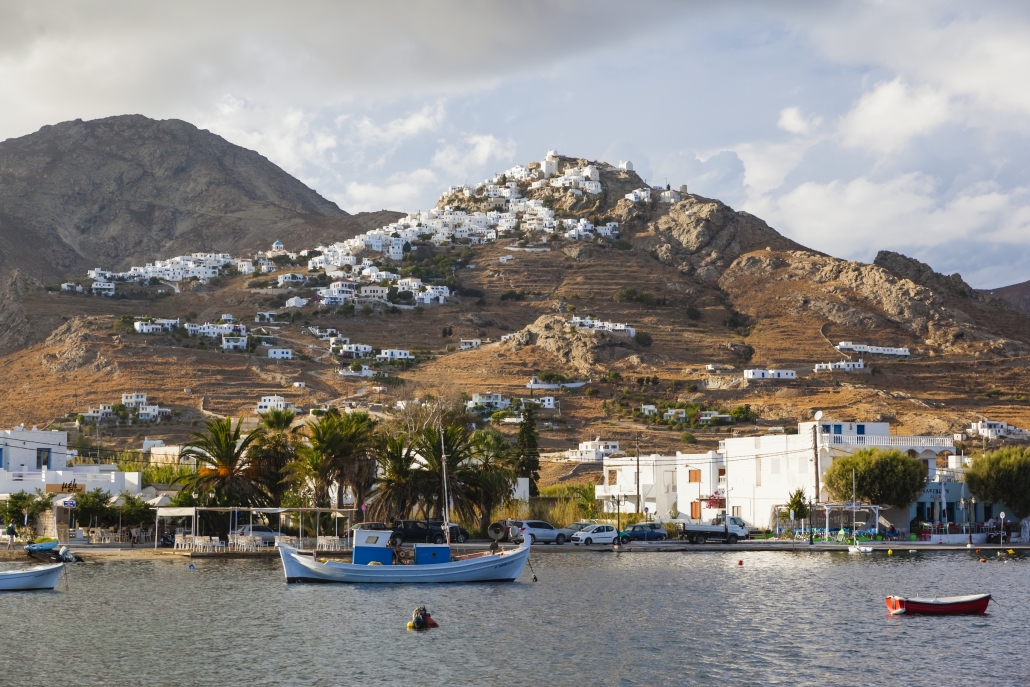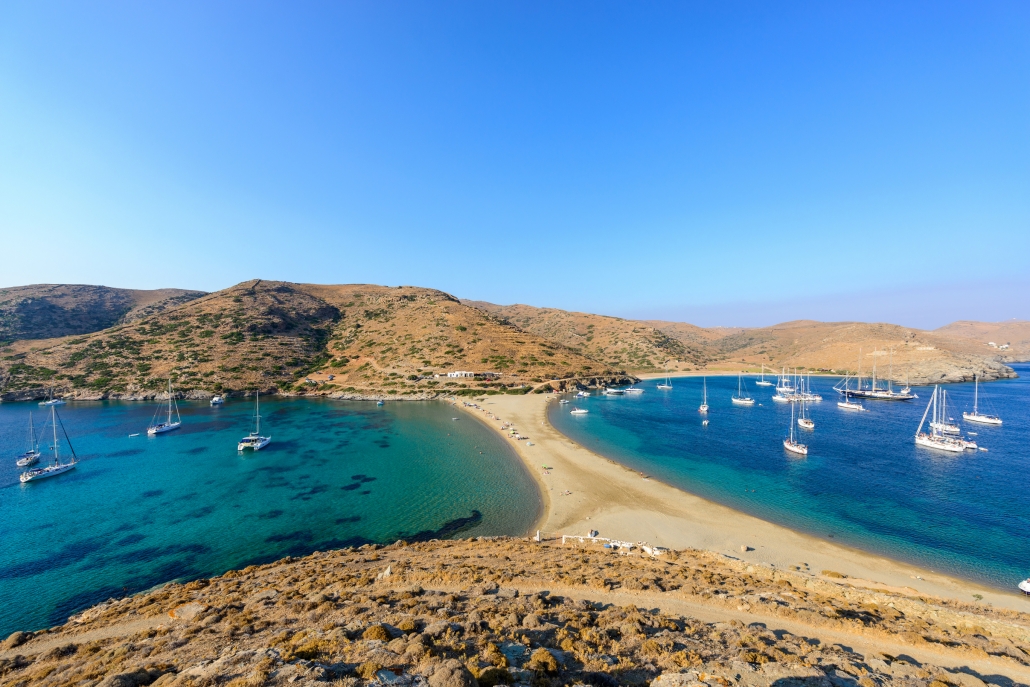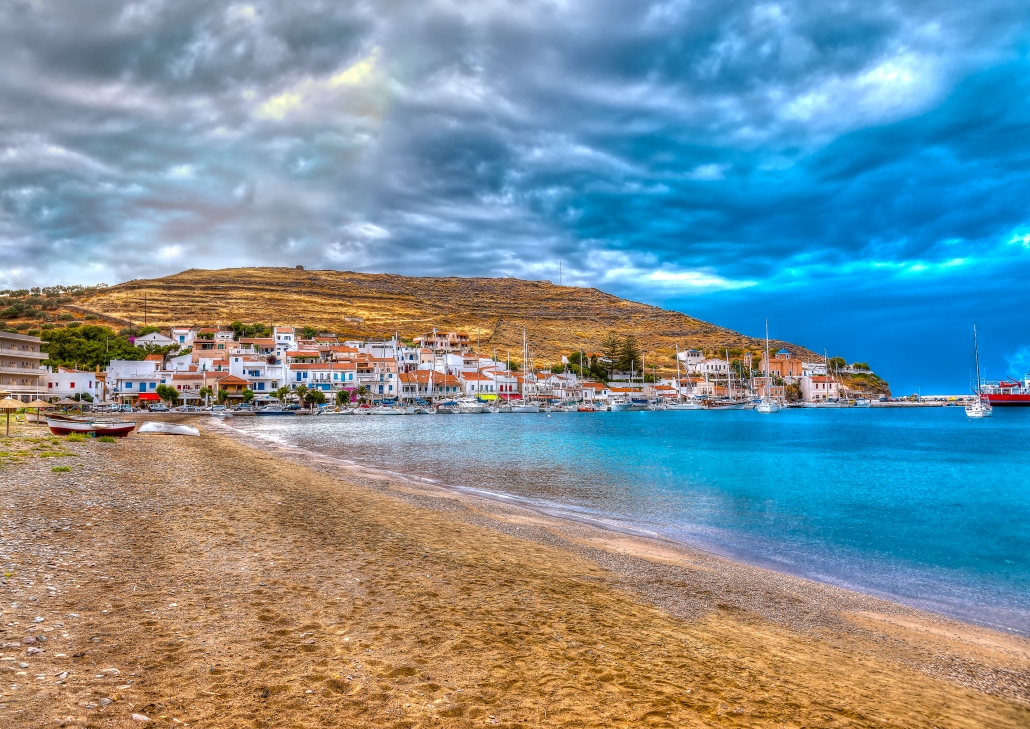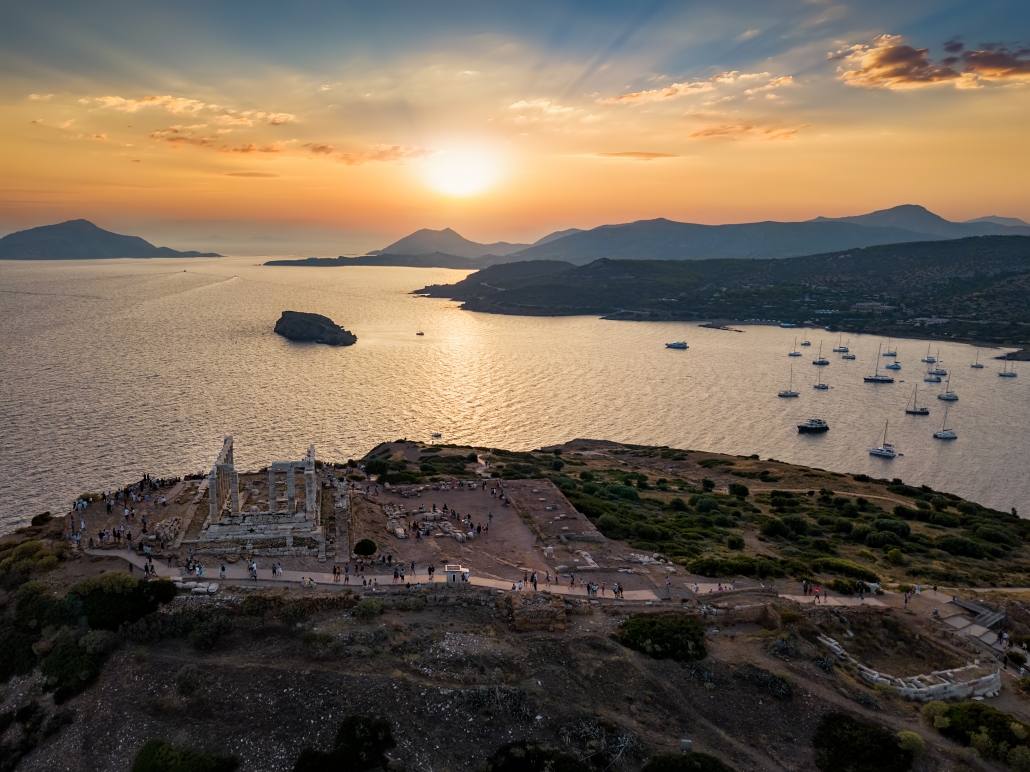Sailing the Cyclades Islands
The most famous island group in the Aegean Sea comprises some of the most beautiful islands in the world! Gorgeous sandy beaches, architecture in white and blue, traditional lifestyle, folk music, warm, hospitable people and barren landscapes with isolated chapels turn a trip to the Cyclades into a lifetime experience.
The name “Cyclades” refers to the islands forming a circle (the name in English means: “circular islands”) around the sacred island of Delos. According to the Greek mythology, Poseidon, God of the sea, furious at the Cyclades nymphs turned them into islands.
Suggested Itineraries
Western Cyclades
Day 1: Lavrio – Kea
Kea is the first island of the Cyclades and the port is protected from the North winds. You can either moore on anchor in the bay or on the small dock. You can rent a car or take a taxi to explore the island or just relax in the bay, definitely try the tavernas by the dock.
Day 2: Kea – Kithnos Loutra
Visit the island of Kithnos and the small port of Loutra where you can see the natural springs and baths while also relax in the small and picturesque marina. In the bay just south of the marina (Ag. Eirini) you will find a very nice taverna. If you have time get a taxi and visit the main village of Kythnos which is inland and is very beautiful with its traditional Cyclades architecture and small streets.
Day 3: Kithnos Loutra – Serifos
Serifos’ main village (Chora) with white houses and blue windows is on a hill at the entrance of the main port which makes it very picturesque when sailing in and a must see visit in the evening to see the sunset. After the sunset go to the Chora main square and eat at one of the tavernas.
Day 4: Serifos – Milos
Serifos’ main village (Chora) with white houses and blue windows is on a hill at the entrance of the main port which makes it very picturesque when sailing in and a must see visit in the evening to see the sunset. After the sunset go to the Chora main square and eat at one of the tavernas.
Day 5: Milos – Sifnos
The volcanic activity in ancient years has endowed this island with an exciting variety of gorgeous landscapes, visit the protected port of Adamas and the Kleftiko bay in the South side.
Day 5: Sifnos – Kithnos Merichas
Arrive at Kithnos island and the one of a kind Kolona bay (a strip of sand divides the bay into two). You can either stay all night at the bay on anchor (and visit the Taverna on the beach) or go to Merichas port which is just 1nm away for the night.
Day 7: Kithnos Merichas – Lavrio
A sailing day and last chance to enjoy the Aegean see before you return to Lavrio. Just before you arrive stop for a swim at Sounion Bay you anchor just under the temple of Poseidon and you are protected by the prevailing north winds.
Mykonos and Paros
Day 1: Lavrio – Kea
Kea is the first island of the Cyclades and a good stop as the port is protected from the North winds. You can either moore on anchor in the bay or on the small dock. You can rent a car or take a taxi to explore the island or just relax in the bay, definitely try the tavernas by the dock.
Day 2: Kea – Syros
A long leg but worth it, if you are too tired you can go to the nice bay of Foinikas with the 2nd largest settlement of the island or sail directly to the town of Ermoupolis which is also the capital of the Cyclades. This was an old Italian colony so you will also see different architecture in the old town than other Cyclades islands. The two hills in the centre of the town one with the Catholic church and community and the other with Orthodox church and community make this island quite unique.
Day 3: Syros Ermoupolis – Mykonos
Mykonos is the most famous Greek island and the most cosmopolitan. You must visit Little Venice, the Windmills and walk in the small streets of the town where the Cyclades architecture is at its best. Make sure that either after or before you arrive to go to the small island of Delos just opposite Mykonos. The island of Delos is one of the most important mythological, historical, and archaeological sites in Greece.
Day 4: Mykonos – Paros
The island of Paros which is one of the most famous Greek islands with the exquisite beaches and small villages. The village of Naousa is perfectly protected from the winds and has a very vibrant atmosphere during the summer months while also having very good tavernas.
Day 5: Paros – Syros Foinikas
Foinikas is a beautiful beach in the west of the Island, it is a popular destination due to its infrastructure featuring all comforts and conveniences such as an organized marina for the yachts and traditional fish taverns right by the sea.
Day 5: Syros Foinikas – Kithnos Loutra
At the small port of Loutra you can see the natural springs and baths while also relax in the small and picturesque marina. If you have time get a taxi and visit the main village of Kithnos which is inland and is very beautiful with its traditional Cyclades architecture and small streets.
Day 7: Kithnos Loutra – Lavrio
A sailing day and last chance to enjoy the Aegean sea before you return to Lavrio. Just before you arrive stop for a swim at Sounion Bay you anchor just under the temple of Poseidon and you are protected by the prevailing north winds.
Two Weeks to Santorini
Day 1: Athens – Sounion Bay
Sounion Bay is the perfect stop for the first day of sailing. You anchor just under the temple of Poseidon and you are protected by the prevailing north winds. Perfect setting to have dinner under the stars and the temple.
Day 2: Sounion Bay – Kithnos
Arrive at Kithnos island and the one of a kind Kolona bay (a strip of sand divides the bay into two). You can either stay all night at the bay on anchor (and visit the Taverna on the beach) or go to Merichas port which is just 1nm away for the night.
Day 3: Kithnos – Serifos
Serifos’ main village with white houses and blue windows is on a hill at the entrance of the main port which makes it very picturesque when sailing in and a must see visit in the evening to see the sunset.
Day 4: Serifos – Sifnos
Visit Sifnos as it is famous for its cuisine, the bay in Vathi is very well protected and can good place to spend the night.
Day 5: Sifnos – Kimolos
A short run to Kimolos island and a must see is the small uninhabited island of Poliaigos just opposite which has the best bays and waters in the whole of Greece. Anchoring and swimming there will be a special experience.
Day 6: Kimolos – Folegandros
Folegandros is still untouched thanks to its mild tourism development and is a perfect place to winddown and experience Cyclades food and architecture.
Day 7: Folegrandros – Santorini
Santorini the one of the most famous islands in the Mediterranean if not the most famous. Breathtaking when getting there with the yacht as the Volcano has created a natural bay with cliffs with the traditional Cyclades houses perch right on the top. If you have time, try to visit a winery as the wine that is produced here is unique due to the volcanic soil
Day 8: Santorini – Antiparos
Antiparos is an island that combines beauty with history and archaeological interest, and you should visit a small uninhabited island, Despotiko that lies just off the south east coast of Antiparos. Its rocky moonscape, with unspoilt beaches of all sizes, will offer you the chance to relax in absolute serenity.
Day 9: Antiparos – Paros
The island of Paros which is one of the most famous Greek islands with the exquisite beaches and small villages. The village of Naousa is perfectly protected from the winds and has a very vibrant atmosphere during the summer months while also having very good tavernas.
Day 10: Paros – Mykonos
Mykonos is the most famous Greek island and the most cosmopolitan. You must visit Little Venice, the Windmills and walk in the small streets of the town where the Cyclades architecture is at its best. Make sure that either after or before you arrive to go to the small island of Delos just opposite Mykonos. The island of Delos is one of the most important mythological, historical, and archaeological sites in Greece.
Day 11: Mykonos – Syros
Sail the town of Ermoupolis which is also the capital of the Cyclades. This was an old Italian colony so you will also see different architecture in the old town than other Cyclades islands. The two hills in the centre of the town one with the Catholic church and community and the other with Orthodox church and community make this island quite unique.
Day 12: Siros – Kithnos Loutra
Second stop at the the island of Kithnos but this time at the small port of Loutra where you can see the natural springs and baths while also relax in the small and picturesque marina. If you have time get a taxi and visit the main village of Kithnos which is inland and is very beautiful with its traditional Cyclades architecture and small streets.
Day 13: Kithnos – Kea
Kea is the first island of the Cyclades and last on your trip and a good stop as the port is protected from the North winds. You can either moore on anchor in the bay or on the small dock. You can rent a car or take a taxi to explore the island or just relax in the bay, definitely try the tavernas by the dock.
Day 14: Kea – Athens
Last day, enjoy your sailing back to Athens!

